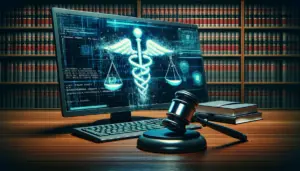Healthcare Providers Must Combine Zero Trust Architecture and Threat Modeling to Address Cybersecurity Challenges
In today’s increasingly digital world, the healthcare sector faces significant cybersecurity challenges, necessitating urgent and sophisticated responses. The recent draft guidance issued by the FDA on cybersecurity for medical devices highlights a critical juncture for the industry: the need to implement and scale best practices in cybersecurity is more pressing than ever. As healthcare continues to integrate advanced technology, from medtech devices to comprehensive electronic health records, the potential for security breaches grows, underscoring the stakes involved in protecting sensitive health information.
What are the most effective strategies for healthcare organizations to not only implement but also scale and automate these cybersecurity best practices?
Mike Isbitski, the Director of Cybersecurity Strategy at Sysdig shares his take on the imperative role of implementing and scaling cybersecurity best practices in the healthcare industry on an episode of Expert’s Talk. Isbitski emphasizes the importance of adopting a zero-trust architecture, threat modeling and enhancing supply chain security through comprehensive management of software and hardware components and more to tackle cybersecurity challenges in healthcare.
Here are the key takeaways from Isbitski’s analysis:
- Zero Trust Architecture: Emphasizing the shift towards a zero trust framework, which is crucial for protecting against internal and external breaches.
- Supply Chain Risks: Highlighting the importance of understanding and securing the supply chain, particularly with the use of Software and Hardware Bills of Materials (SBOMs and HBOMs) to manage risks effectively.
- Regulatory Guidance: Discussing the new FDA cybersecurity guidelines, which aim to tailor cybersecurity measures specifically for the healthcare and medtech sectors.
- Automation and Scalability: Addressing the critical need for cybersecurity strategies to be scalable and automated to handle the increasing volume and sophistication of threats.
- Threat Modeling: Advocating for a proactive approach in threat modeling to anticipate and mitigate potential security threats before they materialize.
Article written by Sonia Gossai








